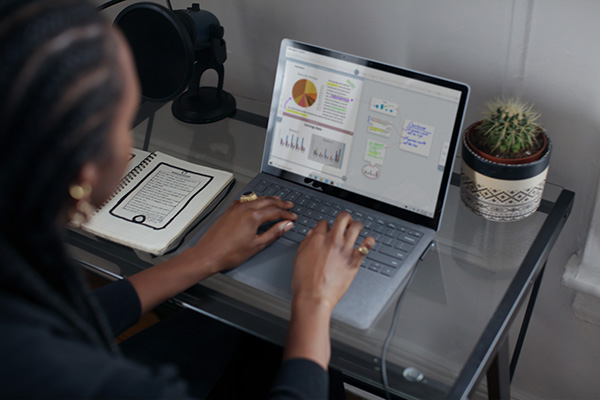HIGHLIGHTS:
- Omicron & The Return to Work
- The Great Resignation
- Hybrid – Is It Now a Reality?
- Future Operations Risks
- Forecasting Beyond COVID
The following report is a synthesis of news and trends seen in the last quarter. This update is focused solely on themes of operational significance. The following take-a-ways are meant to foster ideas and promote creative thinking as each organization will interpret and distill this information in its own unique manner.
TOPIC 1: OMICRON & THE RETURN TO WORK
Is it déjà vu all over again? At least it certainly feels that way. I’m sure we all are remembering late 2020 or early 2021, but late Q4 ‘21 has felt eerily similar.
The “return-to-work” has shifted from September ’21 – to November ’21 – to January ’22 – to March/April ‘22. What is the real date, who can predict and plan at this point? It’s anyone’s guess right now but logic would continue to dictate that preparing for hard and fast dates and deadlines is difficult and almost impossible. Fluidity coupled with pragmatism is how companies continue to cope with the situation.
Our present-day realities involving variants, vaccines and testing challenge a clean and clear path back to normal office routines. Constant curve balls, nuances, changes in CDC guidelines, local regulations and employee reactions continue to impact each organization’s approach. Large corporations, once dogmatic in their demands for a mandated return, are now rethinking their approach and slowly acquiescing to a phased reassessment and acceptance of a hybrid workplace scenario. Employees have begun to enjoy the flexibility of such arrangements so, it would appear, a balance between both perspectives is slowly emerging.

Ongoing Issues to Consider:
- Local Office Conditions and State Mandates.
- Reprioritization of Needs, Wants, and Desires.
- Preparedness: How Adaptable is Your Organization to Further Changes?
TOPIC 2: THE GREAT RESIGNATION
Where did everyone go? Which industries are being impacted the most?
As of the end of November ‘21, 4.5 MM* people resigned from their jobs. Impacted the most have been the hospitality, social assistance, transportation, healthcare, warehousing, and utility industries.
Given the current tight labor market, job opportunities abound. Could his trend continue throughout 2022 and, if so, how will organizations grapple with it? Of additional consideration will be the impact felt by Omicron.
As of November, ’21, there were 10+ million jobs available in the workforce, while quit rates were approximately 3%. The issue is real! We witness it daily in the shrinking operating hours of retailers and restaurants. Bottom line, labor is not only hard to find but also hard to keep.
*Source: U.S. Bureau of Labor Statistics
Ongoing Issues to Consider:
- What is the true impact on organizations?
- Is this sustainable? For whom?
- Will modifying operations (open hours, staffing, etc.) stem the issue?
- Where and how can new hires be found and retained?

TOPIC 3: HYBRID – NOW A REALITY?
We think it’s fair to say that hybrid working is here to stay (at least for a long while). Now it’s just a question of how each organization will deal with it in their own unique manner.
Employees have become accustomed to the flexibility hybrid has afforded them. Employers have been forced to contend with ongoing changes in the pandemic, only furthering their commitment (whether intentional or not) to embrace a hybrid work environment.
As we progress through yet another phase of the pandemic, questions persist as to how (and to what extent) does hybrid fit into each organization’s strategic and operational plan. Regardless of industry, customers, products, or services being made, it’s a unique and situation-dependent issue. That said, it’s a question that remains and needs to be considered.
Learn more about our Workplace Solutions


Ongoing Issues to Consider:
- What do employees want?
- Is there a correlation between hiring and retention?
- What defines an “Office” these days?
- How quantifiable are the costs/benefits of a hybrid strategy?
TOPIC 4: FUTURE OPERATIONS RISKS
Inflation, supply chain, interest rates.
Inflation is looming. CPI hit its fastest pace of growth at 7% (December ’21) in four decades (since 1982). Purchasing power and unemployment continue to decrease. Compound it with supply chain issues and rising interest rates and there’s a lot to consider in 2022.
As most businesses do, it’s time to play offense and defense by creating countermeasures to offset supply cost increases, labor shortages, wage hikes, and so on. What are your industry peers doing to predict or confront these headwinds?
Key strategies we have witnessed to counteract such obstacles include spending reviews (strategic / non-strategic), expense reviews (fixed / variable), raising prices, reducing hours of operations, outsourcing, automation, reprioritizing needs, and diversification of suppliers.


Ongoing Issues to Consider:
- When will inflation peak?
- Operational Risk Assessment?
- Customer Impact?
- Business Impact?
- Preparedness?
TOPIC 5: FORECASTING BEYOND COVID
Who thinks we’re done with COVID once Omicron passes? Are we entering the next phase, or an endemic?
Experts are mixed at the moment, but logic would dictate that we’re not out of the woods yet. Organizations have begun to anticipate “something” but, obviously, no one knows what’s in store (if anything). Consensus is that there will be no “ending” to COVID, rather dealing with it in co-existence (like the flu). Does that mean masks, vaccines, boosters, testing, and social distancing forever?
So, how do you plan? Assuming an endemic-like end game for COVID, should organizations simply plan accordingly and incorporate related precautions and procedures into everyday operations and strategies? If so, what does that look like?
Learn more about our Strategic Planning Services

Ongoing Issues to Consider:
- Monitor Global News for New Variants
- Track Global Vaccination Efforts
- Follow CDC, WHO, and FDA Updates and Initiatives
Q4 Conclusions
- Vaccines & Boosters Can Bring Workers Back to the Office (Albeit with Complexities)
- Continual Reading and Reacting to the Evolving Market is To Be Expected
- Predictive Consumer Patterns May Be Challenged for A While

WHAT TO WATCH FOR IN Q1 ’22?

- School Shutdowns: Can they remain open?
- Back to Work: What will be the new goal post?
- The DeltaCron Variant: Problem or not?
- Labor Shortages: Still a persistent problem?
- Material / Supply Chain Shortages: Still a persistent problem?
- Employee Happiness: Equity, visibility, collaboration; what’s the feedback?
- Boosters: Will they eventually be mandated; if so, when?
ABOUT P&M Advisors
P&M Advisors is an Operations Improvement Advisory. Our professionals are dedicated to creating transformational solutions to dynamic problems.
From both a Revenue and Expense perspective, we specialize in the assessment and optimization of Operations, Technology, and Real Estate. Our interdisciplinary approach provides clients with optionality and actionable solutions to drive meaningful change.

